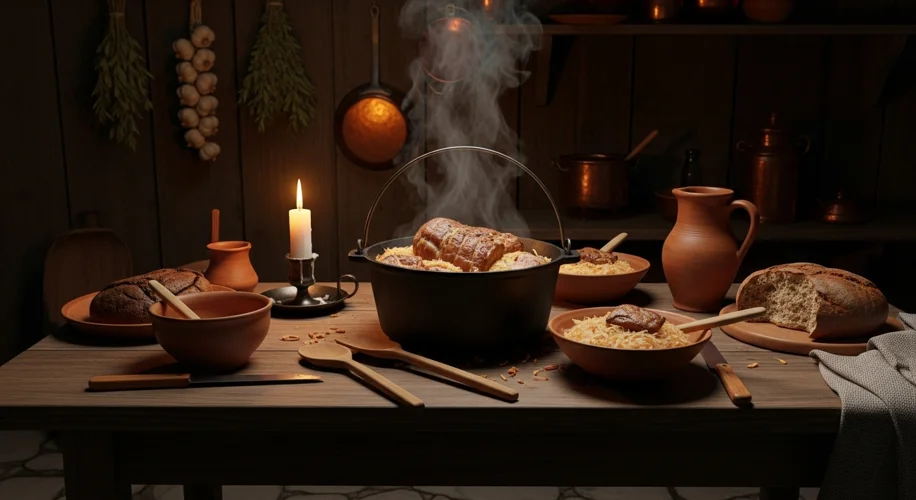Hello fellow history enthusiasts! It’s Rowan here. You know, after spending years immersed in the archives, poring over dusty manuscripts from the 18th century, I’ve come to realize that history isn’t just found in grand pronouncements and battles. It’s also in the everyday, in the food people ate and the way they came together.
Lately, I’ve been thinking a lot about pork and sauerkraut. It might sound like a simple dish, perhaps even a bit rustic, but when you look at it through the lens of 18th-century European life, it opens up a fascinating window into culture, community, and tradition.
Where did this pairing even come from? Well, its roots stretch back quite a way. Pork has always been a staple in many parts of Europe. It was a reliable source of protein, and pigs were relatively easy to raise, even for smaller landholders. But it was the fermentation process for cabbage – turning it into sauerkraut – that really made it a wintertime hero. Fermentation allowed food to be preserved long after the harvest, a crucial skill in an era before refrigeration.
Imagine a cold evening in the 1700s. The fields are bare, but the larder has preserved goods. Pork, often salted or smoked, and tangy sauerkraut would have been hearty, nourishing fare. It wasn’t just about sustenance, though. These foods became central to social gatherings. Think of a family coming together during the long winter months, perhaps after a church service or a local market day. A pot of simmering pork and sauerkraut would have been a communal meal, shared around a table, fostering warmth and connection.
I’ve found references in letters and diaries to these kinds of meals. They weren’t always elaborate affairs, but the act of sharing food, especially food that required effort to preserve and prepare, carried significant social weight. It signified hospitality, abundance (even if modest), and the strength of family or community bonds.
It’s easy to see how these traditions carried forward. As families grew and moved, they often carried their culinary heritage with them. So, the next time you encounter pork and sauerkraut, whether at a restaurant or on your own dinner table, take a moment to appreciate its history. It’s more than just a meal; it’s a delicious link to our past, a reminder of how people prepared, shared, and connected over food centuries ago.
Perhaps it’s an invitation to create our own traditions around these simple, yet historically rich, foods. What historical dishes are special to your family?

